The Skilled Migration Program is the pathway that most migrants apply for to work in Australia. The main concern for international workers and students is choosing the most suitable occupation based on their skills that leads to an Australian Permanent Residency Pathway. The skilled migration data from 2023 can provide insight into the top occupations for the Skilled Migration Program.
Related:
Skilled Migration Program – General information
Skilled migration in Australia consists of the following visa subclasses:
- Skilled Independent – visa subclass 189
- State/ Territory Nominated – visa subclass 190
- Skilled Work Regional – visa subclass 491
- Employer Sponsor: subclass 186, 482, 494
- Global Talent (independent) – visa subclass 858
- Business Innovation and Investment – visa subclass 188
The most popular visa types in the Skilled Migration Program are visa subclass 189, 190 and 491. These visas account for 44% of the skilled migration program in Australia.
The information below takes a closer look at the top 10 occupations that are being invited to apply for visa subclasses 189, 190, 491 and the Global Talent visa.
Top Occupation for Skilled Independent Category – Visa subclass 189
The total number of visas granted under subclass 189 is 7,213. Let’s have a look at the top 10 occupations that have the greatest number of visas granted under this stream.
The top occupations under this stream are professional occupations. This aligns with the patterns of the Bespoke Invitation Rounds conducted by the Department of Home Affairs since the beginning of the COVID-19 pandemic in early 2020. Professional occupations receive the majority of 189 visa grants due to the demand of healthcare workers and engineers to support the recovery of Australia’s economy post COVID-19.
One thing to note is that the points required to receive an invitation under the 189 visa is relatively high. They range from 90 points to 110 points. As a result, trade occupations are disadvantaged and are less likely to qualify for this visa due to the high points required and not being considered in targeted invitation rounds.
Top Occupation for State/Territory Nominated – visa subclass 190
The total number of visas granted under subclass 190 is 14,268. This is twice the number of 189 visas.
Visa subclass 190 requires a State or Territory nomination, and each state/territory has their own set of requirements to nominate suitable applicants.
The top occupations for visa subclass 190 are also in line with the general strategy of Australia to support the healthcare system and economic recovery. Nurses, Engineers, and ICT Professionals are among the occupation groups that received the greatest numbers of grants.
Noticeably, Chefs – which is a trade occupation – is among the top 10 occupations from the state/territory nominated visa.
Top Occupation for Regional Skilled Work – Visa subclass 491
Visa subclass 491 is an alternative pathway for those who do not adequate points to apply for visa subclass 189 or 190. Again, we can see the top occupations that are granted visa 491 are the same as those of visa subclass 190.
Global Talent Visa – subclass 858
Australia successfully attracted 9,584 talents from around the world to come to Australia in the last migration year. Let’s have a look at the proportion of visa grants across the priority sectors for the GTI visa.
DigiTech had the greatest number of Global Talent visa granted last year. This accounted for 34% of the whole program, followed by the Health Industries (23%) and Energy sector (17%). Other sectors include Agri-food and Agri-tech, Infrastructure and Tourism, Education, and Circular Economy accounted for the smallest portion at only 2%.
By looking at previous year data, we can draw general conclusions as to the most popular occupations being considered in the Skilled Migration Program. However, it should be noted that this information is for reference only as the Australian Migration Program changes rapidly throughout the year.
Related:
- Top Occupations For Australia Immigration – Employer Sponsored Visas
- Bespoke Invitation Rounds For 189 And 491 Visa (Family Sponsored Stream)
- Major Partner Visa Changes, Family-Employer-Business Visas Prioritised Within 160,000 Places
- Migration Numbers and Study Australia Updates
- Australia’s Migration Program – General Skilled Migration
- Skilled Occupations List
- PMSOL
- Global Talent visa invitation numbers by nationality


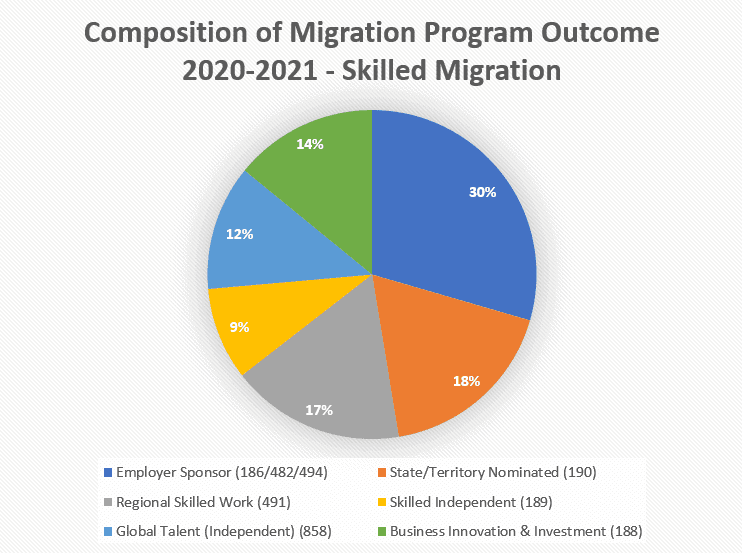
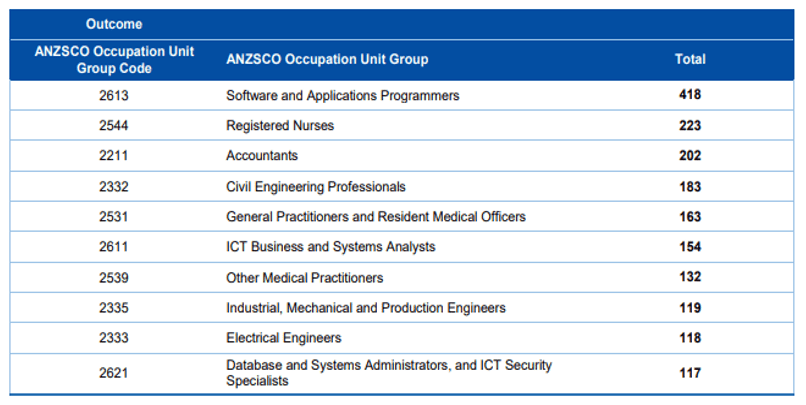
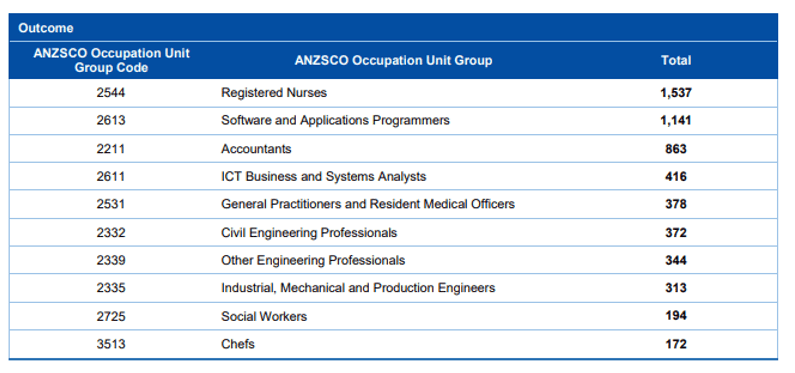
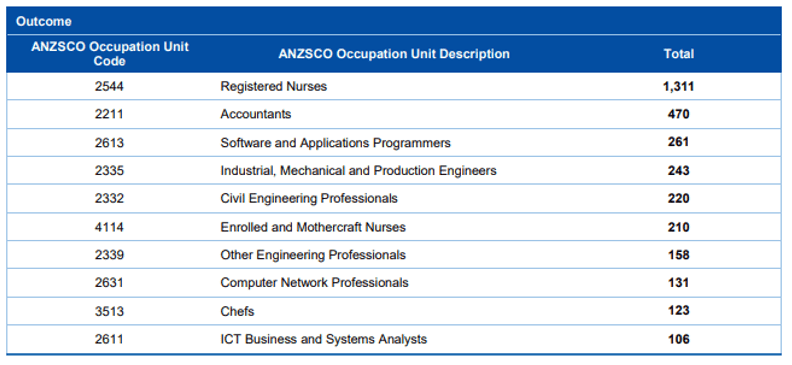
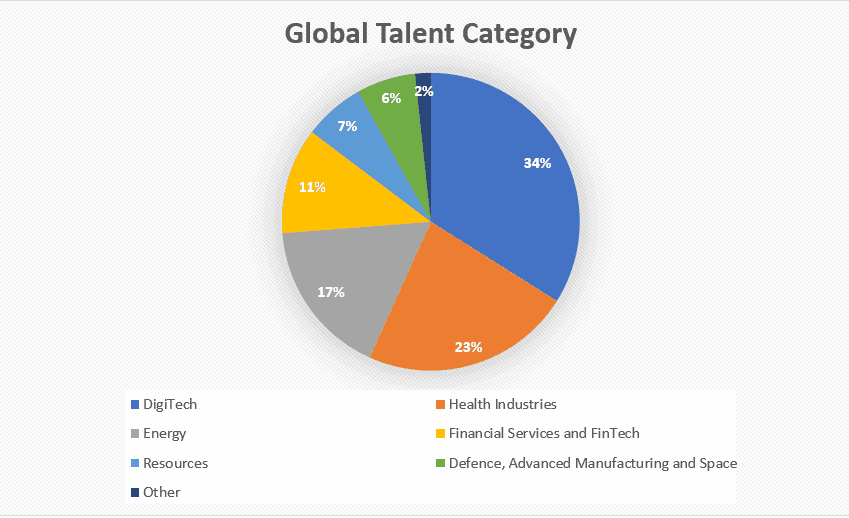




Remote Work and Travel Now Clearer for 491, 494 and 489 Regional Visa Holders
New 186 TRT Rule Adversely Impacts Medical Practitioners’ PR Pathway
Tasmania – Health and Allied Health Occupations List (TSE Pathway)
Tasmania – TSE Priority Occupation List (2025-26)
Australia Migration Updates: Visa Processing Times, Program Levels, and New Visas – September 2025